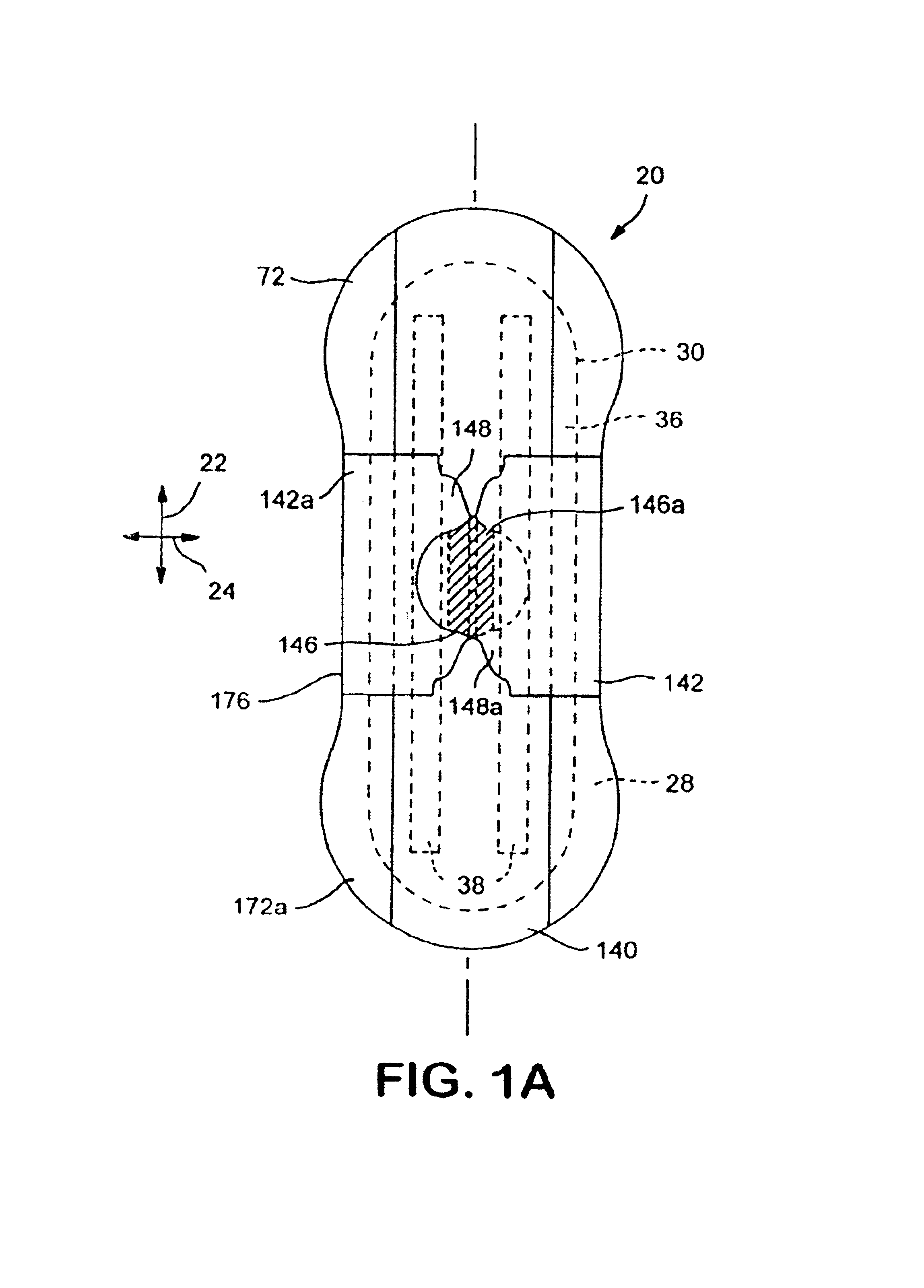Absorbent structures with selectively placed flexible absorbent binder
a technology of absorbent binder and absorbent structure, which is applied in the direction of synthetic resin layered products, domestic articles, woven fabrics, etc., can solve the problems of not being conducive to absorbency or liquid transfer function, most adhesives are non-absorbent, and serve no liquid retention function
- Summary
- Abstract
- Description
- Claims
- Application Information
AI Technical Summary
Benefits of technology
Problems solved by technology
Method used
Image
Examples
Embodiment Construction
[0057]Disposable absorbent articles such as, for example, many of the feminine care absorbent products, can include a liquid pervious topsheet, a substantially liquid impervious backsheet joined to the topsheet, and an absorbent core positioned and held between the topsheet and the backsheet. The topsheet is operatively permeable to the liquids that are intended to be held or stored by the absorbent article, and the backsheet may be substantially impermeable or otherwise operatively impermeable to the intended liquids. The absorbent article may also include other components, such as liquid wicking layers, liquid intake layers, liquid distribution layers, transfer layers, barrier layers, and the like, as well as combinations thereof. Disposable absorbent articles and the components thereof can operate to provide a body-facing surface and a garment-facing surface. As used herein, the body-facing or bodyside surface means that surface of the article or component which is intended to be...
PUM
| Property | Measurement | Unit |
|---|---|---|
| temperature | aaaaa | aaaaa |
| density | aaaaa | aaaaa |
| temperature | aaaaa | aaaaa |
Abstract
Description
Claims
Application Information
 Login to View More
Login to View More - R&D
- Intellectual Property
- Life Sciences
- Materials
- Tech Scout
- Unparalleled Data Quality
- Higher Quality Content
- 60% Fewer Hallucinations
Browse by: Latest US Patents, China's latest patents, Technical Efficacy Thesaurus, Application Domain, Technology Topic, Popular Technical Reports.
© 2025 PatSnap. All rights reserved.Legal|Privacy policy|Modern Slavery Act Transparency Statement|Sitemap|About US| Contact US: help@patsnap.com



